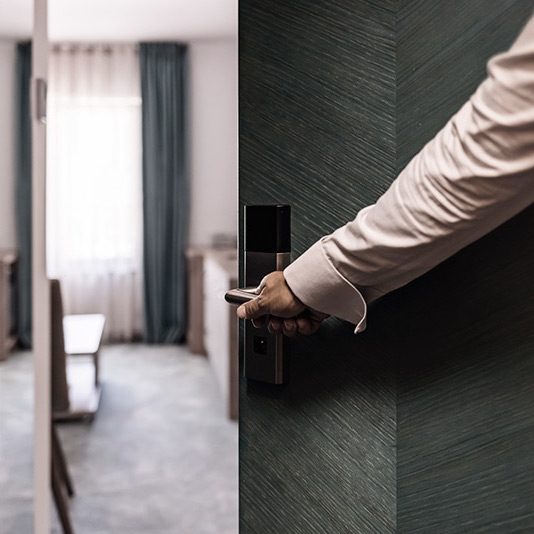95% of all purchasing decisions are subconscious. If you want to really reach people, if you want to communicate with them, if you want to persuade them, you need to figure out how to talk to the subconscious part of their mind.

THE PSYCHOLOGY OF CUSTOMER BEHAVIOR
The psychology behind our service
WHAT YOUR CUSTOMERS WILL REMEMBER MOST IS HOW YOU MADE THEM FEEL.
Your brand is what people say about you when you are not in the room. What you promise a customer and what they experience must be aligned. When the customer experience does not match the brand promise, people feel that disconnection deeply. They might feel mild unease or disappointment: a routine cause of lost repeat business. Or they might experience stronger emotions like distrust, disgust, or betrayal. These negative emotions lead to negative reviews, shared online, in person, or – most likely – both. None are emotions you want associated with your business.
Your customers will have hundreds – if not thousands – of interactions with your brand touchpoints over the course of their stay. Each is an opportunity to intentionally create the experience you promised. To earn their loyalty, you must be engaged with every possible touchpoint – large and small. Don’t leave it to chance.
“95% of all purchasing decisions are subconscious,” writes Behavioral Psychologist Susan Weinschenk, arguing that we’re not the rational, logical beings we think we are. “If you want to really reach people, if you want to communicate with them, if you want to persuade them, you need to figure out how to talk to the subconscious part of their mind. The big reason is that people are driven by subconscious urges… the biggest of which is emotion. Emotion is what really drives purchasing behaviors, and also, decision making in general.”


It’s never just a broken lock


WHAT IS A BRAND?
Your brand is what people say about you when you are not in the room. What you promise a customer and what they experience must be aligned. When customers experience brand touchpoints that do not match your brand promise, people feel that disconnection deeply.
WHAT IS A BRAND TOUCHPOINT?
Brand touchpoint are any single interaction a customer or employee has with your business. This includes tangible things like that lock on the bathroom door, the food in a restaurant, or the way a room is decorated. It also includes experiences such as an interaction with a customer service representative, or with the company’s website. It’s in these many individual interactions that the success of a company is decided.




IT’S NOT JUST A BROKEN LOCK, IT’S ALSO A BROKEN BRAND PROMISE
In the conscious, rational mind, a broken lock on a washroom door is simply that: a broken lock on a washroom door. But in the subconscious, emotional mind, there is much more at stake. A broken lock can leave a customer feeling vulnerable and nervous – potentially exposed. If the hotel is promising luxury or relaxation, a broken lock is a jarring contradiction. The resulting disconnect between brand promise and customer experience creates emotions such as distrust (“They promised one thing, I’m getting another!”), impatience (“I’ll bet this is just one of many things that aren’t living up to their promises!”), and resentment (“I’m not getting what I paid for!”). It’s not just a broken lock, it’s also a broken brand promise.
WHAT YOUR CUSTOMERS WILL REMEMBER MOST IS HOW YOU MADE THEM FEEL.
We often like to think that we’re very rational and logical. But we’re not.


First impressions last
Consumers and potential employees are savvier than ever. Equipped with equal parts brand awareness and a strong sense of what it will take to earn their trust, loyalty, time, and money, they are willing – more now than ever before – to reject a brand that fails to deliver on its promises.
THE IMPORTANCE OF CUSTOMER SERVICE.
73% of consumers from 12 countries name customer experience as an important factor in purchasing decisions10. Yet the same study revealed that only 49% of U.S. consumers were routinely satisfied with the customer experience they received. Addressing that gap should be every business’s concern.
Exceptional customer experience starts with employees. As key ambassadors for your brand, your employees must understand the importance of delivering a consistent brand experience. They should embody your brand values, but are not often trained to do so. We educate your staff in consistent touchpoint delivery, emphasizing a customer-first approach that considers the impact of their actions.




IT COSTS UP TO SEVEN TIMES MORE TO ACQUIRE A NEW CUSTOMER THAN TO RETAIN AN EXISTING ONE.
Most consumers make the decision to repurchase during the post-sale phase – that’s while they’re actively engaging with your business or shortly afterward. That’s also the period when they’re most likely to share their experiences with others, providing recommendations or writing reviews. In short, it’s a crucial stage for brand building. But even if they already love your company’s brand, customers are quick to seek out your competition when things don’t go as expected. 32% of all customers would stop doing business with a company’s brand they loved after a single bad experience (49% in Latin America). That jumps to 59% in the U.S. after “several” bad experiences11. That’s why we focus on helping you retain your existing customers and employees rather than on customer acquisition. The best customer is the repeat customer.
A CULTURE OF EXPLOSIVE OPINIONS.
It’s a familiar story: a company makes a misstep and suddenly it’s a story filling news and social feeds everywhere. Customers increasingly turn to social media to vent frustrations and spread opinion. They distance themselves from the offending company (normally by taking their business elsewhere), and encourage—if not demand—others do the same. In a culture of explosive and potentially damaging opinions, reputation management is a crucial concern. The best way to avoid this type of negative social association is to focus on eliminating bad reviews before they happen.


Why reviews matter and why we focus on tripadvisor.
We focus on Tripadvisor ratings because, with 463 million monthly active users, Tripadvisor is the leader in online reviews for hotels and resorts. A staggering 74% of travelers visit Tripadvisor before booking12. And while Tripadvisor is our focus, you can apply our review procurement tools and strategies to other review platforms like Facebook and Google.
Reviews matter because 72% of people trust reviews and believe them to be true13. And with 50% of dissatisfied customers spreading the word about a negative experience14, the impact of these reviews can be exponential.
One in 10 potential customers will choose not to do business with you because they read a bad review15. Let’s do the math: If 1,000 people read that one bad review, that’s 100 potential customers lost. If your average sale is $150, that’s a loss of $15,000 per year— all from a single negative review. Multiply that one poor review by 10 or 20, and suddenly you’re missing out on a huge sum of income. And it’s not limited to the initial sale, either: you’re losing out on revenue you could have gained from that new customer’s repeat business, positive reviews, and referrals over time.
Of course, bad reviews can happen offline as well. Many people will never leave a bad review because they are uncomfortable with technology, don’t want to add to their digital footprint, or because it’s not in their nature. They still share their negative opinions with friends, and you’ve still lost a potential return or new customer.
ONE BAD REVIEW CAN COST YOUR BUSINESS $15,000 A YEAR.
Dissatisfied customers typically tell 9 to 15 other people about their experience; some tell 20 or more (White House Office of Consumer Affairs).
ANNUAL RETURN GENERATED BY OUR SERVICES STARTS AT $270,000 PER YEAR16
Your ROI will be even juicier when you align your brand touchpoints with your company’s brand promise and redirect some of your current spending on marketing, advertising, and recruitment.

